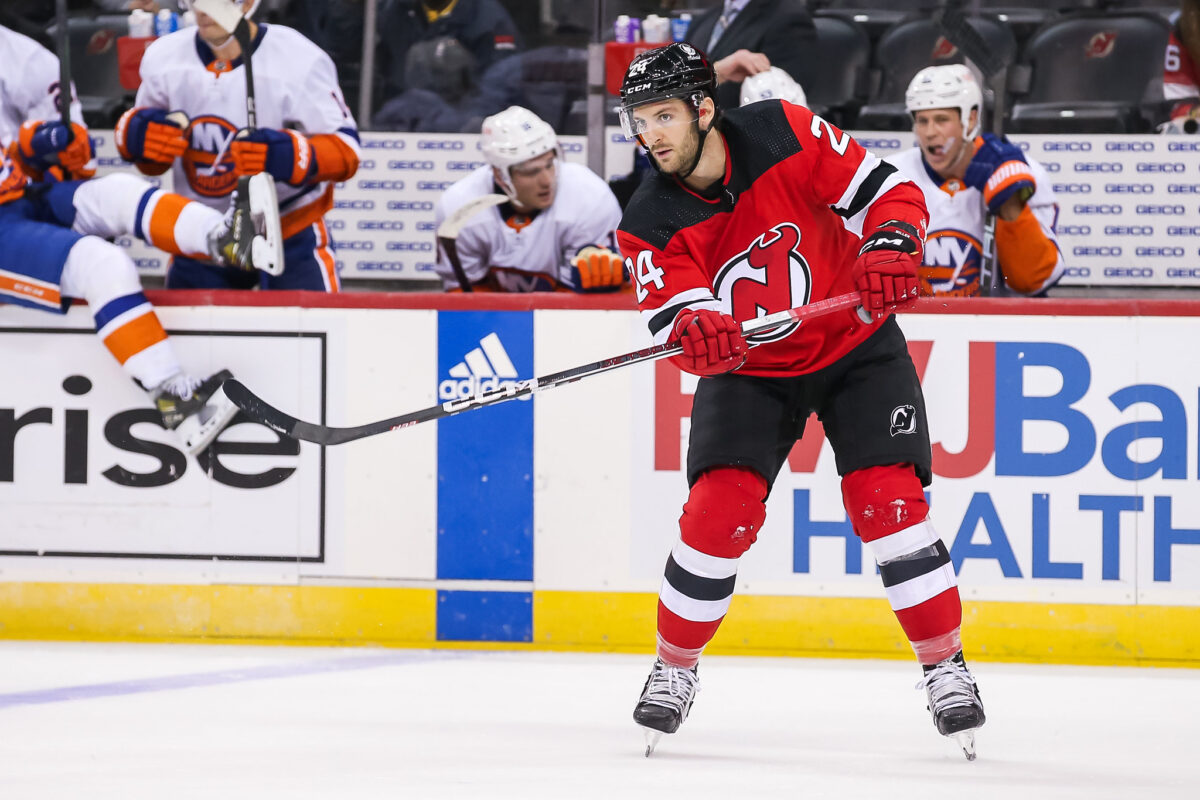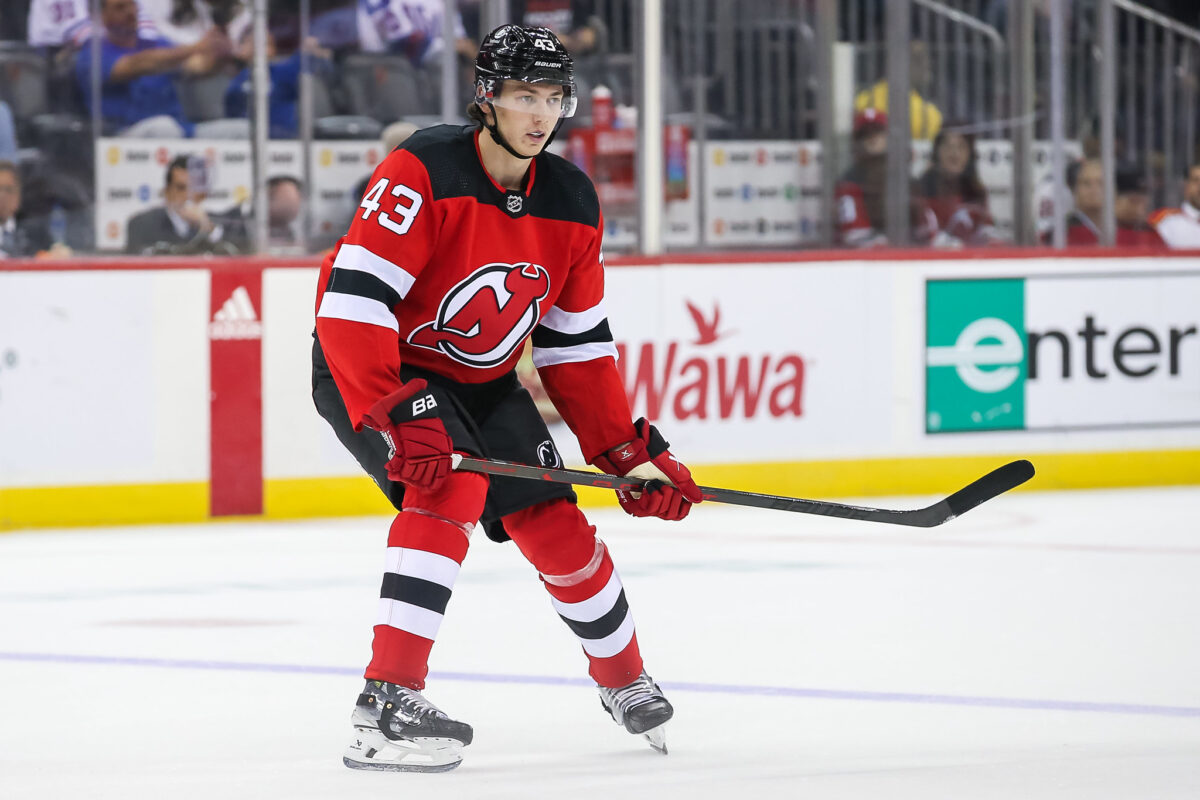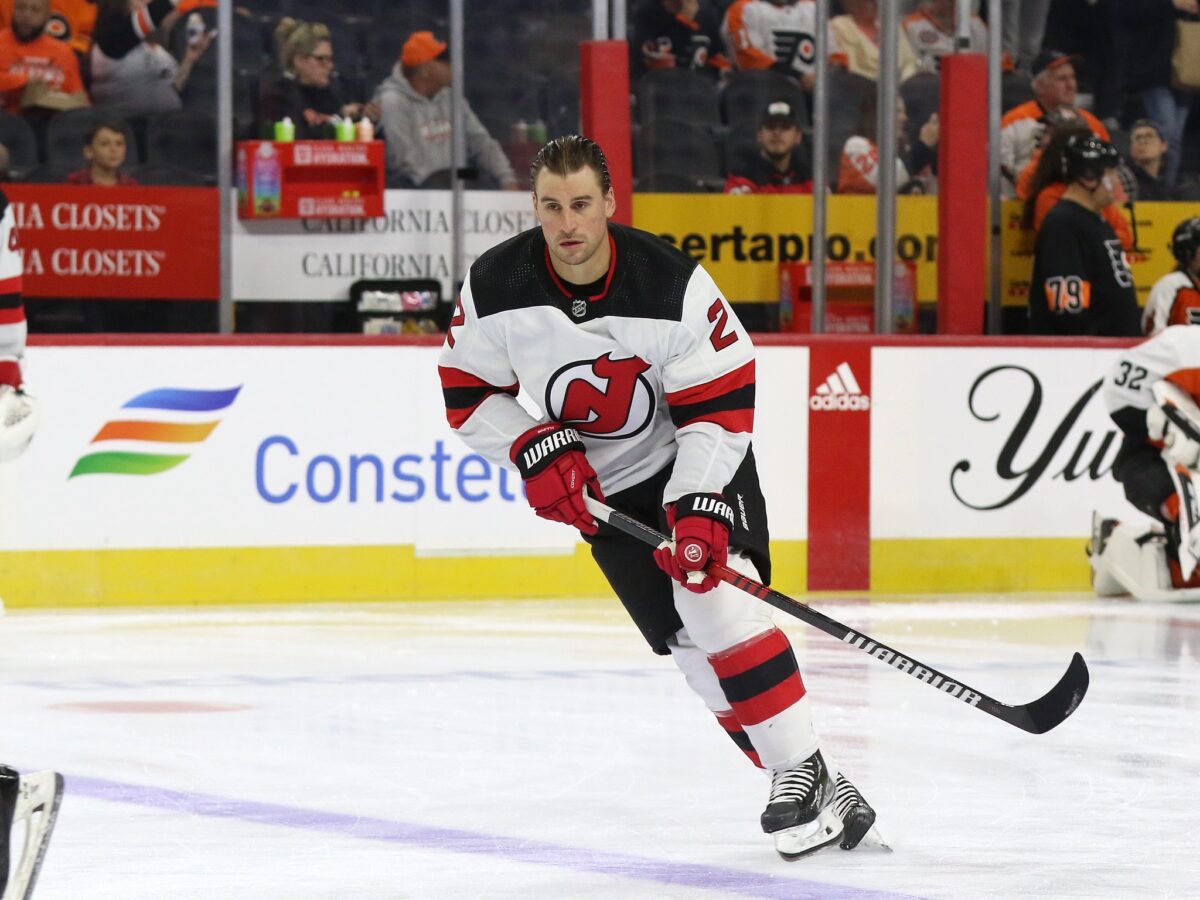When the New Jersey Devils lost over 900 games of NHL experience on the blue line this offseason with the departures of Damon Severson and Ryan Graves, many felt that there was no need to go outside the organization to find replacements as the team had Luke Hughes, Kevin Bahl, Simon Nemec, and others in the pipeline. General manager Tom Fitzgerald, ever the bargain shopper, reached out to the Dallas Stars and traded for veteran right-shot defenseman Colin Miller.

Miller suffered a setback in the preseason and missed the first 14 games of the season. Since his return, and with the absence of Jack Hughes and Nico Hischier the team has flexed to an 11-7 lineup, but with the centers’ return imminent the Devils are likely to go back to 12-6 and Miller needs to remain in the lineup.
Struggling to Find Consistency
Last season, one of the hallmarks of the Devils team was its ability to play solid team defense, minimizing shots and goals. On its way to breaking the team record for wins in a season, the team finished eighth in the NHL in goals against, averaging 2.71 per game. In the early going of this season, much has changed as team defensive breakdowns have become a regular occurrence leading often to odd-man rushes and high-danger opportunities, which have translated into goals against at a rate more than a goal a game higher than last season (3.81). The Devils currently rank fourth in most goals against per game. The only teams that give up more are the lowly San Jose Sharks, the Minnesota Wild, and the disappointing Edmonton Oilers whose play already cost head coach Jay Woodcroft his job.
Head coach Lindy Ruff just signed a multi-year extension and his job is not at risk, however, if he wants to achieve the Stanley Cup that has eluded him, the defense must improve, and improve quickly. Ruff has indicated that it is a team issue and that last season individually, player by player, the team was invested in taking care of their zone first. He has acknowledged that he has yet to see that same attention to detail consistently this season. Over the course of the first 14 games, the Devils used the same six defensemen and largely did not shake up the pairings unless the team was chasing or defending a lead in the third period. Since Miller has returned, the team has gone to 11 forwards and seven defensemen after inserting him into the lineup, and the results have been inconsistent but encouraging.
Is Six Greater Than Seven?
Conventional wisdom is that NHL teams deploy four lines of forwards and three pairs of defensemen with two goalies. For the last two games now the Devils have iced 11 forwards and seven defensemen as a way to integrate Miller into the lineup, keep Brendan Smith around to kill penalties, and account for the losses of Hughes, Hischier, and Timo Meier. The Devils played nearly flawlessly in this system against the Pittsburgh Penguins last Thursday (Nov. 16), putting together their most complete game of the young season. Saturday night (Nov. 18) the team kept the 11-7 lineup but got an infusion of energy from Hughes’ return. That energy seemed to fade as the game went on especially after Tomas Nosek was knocked out of the game following a shot to his head from Jacob Trouba. Having to play an extended time with only ten forwards seemed to wear on the team who faltered late in the game giving up a third-period lead.
RELATED: Four Keys to the Devils Succeeding Without Hischier & Hughes
Throughout his tenure with the Devils, Ruff has expressed a desire to play 12-6, which makes for fewer missed assignments and more continuity. With Hischier looking like he will return to the lineup soon, the Devils are likely to return to trying to roll four distinct lines with three defense pairs. When that happens, Ruff will have to decide who is the odd man out on defense.
What the Devils Can Expect From a Healthy Colin Miller
In his two regular season games, Miller has already demonstrated that he can provide the two-way play that the team has been lacking. He can step in and play third pair, right-side defense immediately and he also can kill penalties and play on the power play. During nearly 30 minutes of 5v5 ice time over the two games (an admittedly small sample size), Miller has Corsi and Fenwick percentages in the 60s, shot distribution in the 70 percent range, and is the only defenseman on the team to not be on the ice when the team conceded a goal.
The Hockey Writers asked Miller before Saturday’s game what Devils fans can expect from his game, “[my] role is to provide stability, we have great defensemen on this team, and I want to be available to play in all situations and help out wherever I can.” Once Ruff gains comfort with that stability, it will be easier to scratch one of the other regulars. He has mostly been paired with Luke Hughes, who was effusive in his praise for Miller saying, “[Miller] has a lot of drive, he plays hard, and likes to play fast…he had a really good game [against Pittsburgh], he’s a good player and we’re excited to have him back.” Playing with pace out of the defensive zone and still being able to support Hughes and cover when he gets aggressive offensively has been a key to the pair’s success. Ruff was similarly pleased with Miller’s performance.
“I saw a real solid game coming off of missing a lot of time. He was an important part of us moving the puck out of our zone, getting there on that first touch, using his legs, we know that is part of his game. Its the speed to get back on pucks and also the speed to get in a place to close gaps on players when they are coming the other way.”
Lindy Ruff, 11/17/23
The key moving forward will be how quickly Miller acclimates to the defensive system many players have called “different” and “challenging”. As demonstrated last season when all six players on the ice remain connected the system works well, however, when there are coverage breakdowns by either forwards or defensemen, this season those errors have ended up behind the goalie. With that in mind, what is the ideal six on the blue line with a healthy Miller?
Unlocking Luke Hughes & Killing Penalties
The most important contributions the Devils can expect from their third pair is to both unlock Luke Hughes and lock up the opposition on the penalty kill. The numbers in the last two games undeniably demonstrate that a Hughes and Miller pair has brought out the best in both players. The team’s expected goal percentage (xGF%) with them on the ice together is over 71 in 20 minutes of ice time. Whereas over a greater sample size, the Smith-Hughes pair has a 40.33 xGF%. In every statistical category, Hughes plays better when paired with someone other than Smith; the time for a change is now. That begets the question of if Miller is in, who is out?

After having a dominant penalty kill last season, the Devils have sunken to the bottom half of the league. While not a primary penalty killer, Miller has respectable numbers over his career and has yet to be on ice in New Jersey when a power play goal was conceded. He is capable of serving as the second-pair defenseman on a kill without worrying the coaching staff, similar to the way Damon Severson was previously deployed. The issue then is who comes out of the lineup if you believe Jonas Siegenthaler, Dougie Hamilton, Luke Hughes, and Miller are fixtures? John Marino has taken some time to find his bearings, and his penalty kill numbers are abysmal, but he built up significant equity last season that has not been depleted. Moving Hughes back to the left side is fine with the rookie.
“It doesn’t matter. I played two and half years (at Michigan) ont he right and my last semester I played left, so I can play ’em both.”
Luke Hughes
While many fans believe that notwithstanding the intangibles he brings to the dressing room and on the bench, Smith deserves to be the odd man out. The fan base has redirected its prior ire away from Severson and focused it clearly on Smith. Smith’s numbers are nowhere near as productive as Severson was last season on either side of the puck but his penalty-killing success may have Ruff thinking twice about sending Smith to the scratch suite. Not only have the Devils not allowed a goal against during the more than two minutes per game Smith is on the ice killing penalties, but they have outscored their opponents 2-0 while shorthanded. In nearly the same amount of time on ice, the team has been outscored 6-0 with Kevin Bahl on the ice during the kill.

Is this alone enough to force Smith onto the ice? Probably not, but when playing a team with a top-caliber power play, perhaps Ruff looks for opportunities to get Smith in the lineup. Such a move would likely come at the expense of Bahl, who, while no longer considered a rookie, is still learning how to best use his size and reach to defend and maintain positional integrity.
With Thanksgiving looming, the Devils are currently a few points shy of a playoff position. To climb back into a comfortable spot and/or challenge for the Metropolitan Division crown, they will need to get hot and string together wins. The return of Hughes and Hischier should bolster the team’s chances, but the most important issue that needs to be immediately addressed is the excessive amount of goals against. Permanently inserting Miller into the lineup alongside Luke Hughes has the potential to both unlock the rookie’s potential and lock down the penalty kill.
